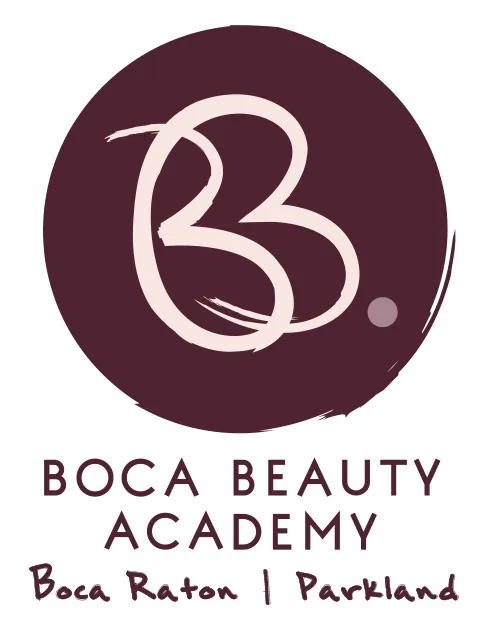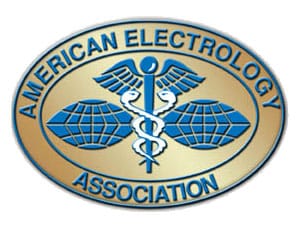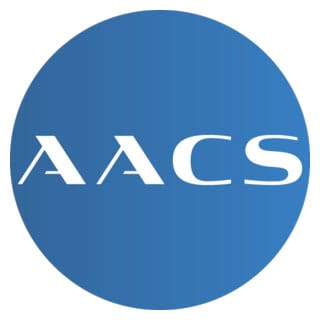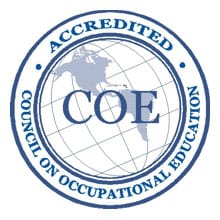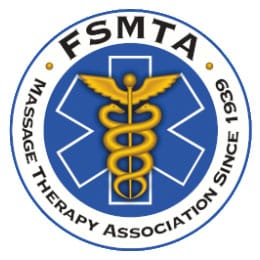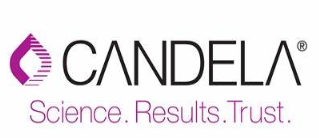Embarking on a career as a medical esthetician offers the rewarding opportunity to combine a passion for beauty with the fulfillment of enhancing patient well-being. In this high-demand field, professionals are not only experts in skincare but also equipped with the knowledge to perform advanced therapeutic treatments. Understanding how to become a medical esthetician is essential for those aiming to enter this specialized area of healthcare. This guide is designed to provide you with a clear pathway, highlighting the importance of selecting the right medical esthetician school, program, and courses that align with your career aspirations.
The journey to becoming a medical esthetician encompasses several critical steps, beginning with comprehensive education and training. Your path will likely start at an accredited medical esthetician school where you’ll engage in a program or course tailored to the unique skills and knowledge required in medical aesthetics. Following your formal education, gaining practical experience through internships or apprenticeships is invaluable.
Additionally, obtaining certification and licensure is a crucial milestone, signifying your competence and professionalism in the field. This article will guide you through each of these steps, providing insights into educational requirements, practical experience, and the certification process to help you establish a successful career as a medical esthetician.
Understanding the Role of a Medical Esthetician
As a medical esthetician, you play a crucial role in helping patients with various skin conditions, traumas, and aging concerns. Your primary responsibilities revolve around administering specialized treatments and providing expert guidance to promote skin health and rejuvenation.
Key Responsibilities
- Perform advanced aesthetic treatments: You will be trained to conduct procedures such as chemical peels, microdermabrasion, laser therapy, and the application of potent acids. These treatments aim to address issues like fine lines, wrinkles, acne, acne scarring, and skin discoloration.
- Support patients undergoing medical treatments: In hospitals and clinics, you will assist patients who are undergoing operations or medical treatments that involve the skin. This includes instructing patients on how to care for sensitive healing skin, reduce swelling, and manage post-treatment concerns.
- Provide emotional support and boost confidence: Medical estheticians offer emotional relief to patients undergoing long-term treatment care. You will play a role in boosting the confidence of individuals who may be self-conscious about their appearance due to skin conditions or trauma.
- Conduct consultations and skin analyses: As a medical esthetician, you will be responsible for conducting consultations, analyzing clients’ skin concerns, and creating personalized treatment plans and product recommendations.
- Maintain accurate documentation: Completing required intake information, maintaining client files, and documenting treatments and progress are essential aspects of your role.
Skills Required
To excel as a medical esthetician, you will need to develop the following skills:
- Comprehensive knowledge of skincare products, ingredients, and their benefits.
- Proficiency in performing various aesthetic treatments, such as microneedling, laser hair removal, photofacials, chemical peels, and more.
- Familiarity with injectables and their applications.
- Excellent communication and customer service skills to build strong client relationships.
- Attention to detail and adherence to safety and sanitation protocols.
- Ability to stay updated on current trends, issues, and best practices in cosmetic treatments and laser therapies.
By understanding the key responsibilities and developing the necessary skills, you will be well-equipped to navigate the dynamic field of medical esthetics and provide exceptional care to your patients.
Educational Requirements
To become a licensed medical esthetician, you need to complete an accredited education program and fulfill specific training requirements. Here are the key educational requirements:
Necessary Degrees and Certifications
- Esthetician License: Most states require you to obtain an esthetician license to practice as a medical esthetician. The licensing process typically involves completing an approved training program and passing written and practical exams.
- Cosmetology or Esthetician Program: You can enroll in a cosmetology or esthetician program at a vocational school, community college, or specialized esthetics institution. These programs provide a combination of classroom instruction and hands-on training in areas such as skincare treatments, hair removal, makeup application, and safety protocols.
- Certificate or Diploma: Many schools offer certificate or diploma programs in esthetics, which can be completed in 9 to 12 months. These programs cover topics like anatomy, physiology, skin analysis, and advanced treatments like chemical peels and microdermabrasion.
- Associate’s Degree: Some community colleges offer associate’s degree programs in esthetics, which typically take two years to complete. These programs provide more in-depth training and may include courses in business management and marketing.
When selecting a school or program, consider factors such as accreditation, curriculum, hands-on training opportunities, and job placement assistance. It’s also essential to ensure that the program meets the licensing requirements in your state.
Gaining Practical Experience
Practical experience is an essential component of your journey to becoming a medical esthetician. It allows you to apply the theoretical knowledge gained during your education and develop the necessary skills to excel in this field. There are two primary avenues for gaining practical experience: internships and apprenticeships, and clinical training.
Internships and Apprenticeships
Internships and apprenticeships provide invaluable hands-on training under the guidance of experienced professionals. These opportunities allow you to:
- Observe and learn from seasoned medical estheticians in real-world settings.
- Gain exposure to various skin conditions, treatments, and client interactions.
- Develop your skills in performing procedures such as chemical peels, microdermabrasion, and laser treatments.
- Build your professional network and establish connections within the industry.
Many esthetician programs include internship or apprenticeship components, allowing you to accumulate the required hours of practical experience. If your program does not offer this opportunity, you can actively seek internships or apprenticeships at medical spas, dermatology clinics, or plastic surgery centers.
Clinical Training
Clinical training is another crucial aspect of gaining practical experience. During this phase, you will have the opportunity to work directly with clients under the supervision of licensed professionals. Clinical training typically involves:
- Conducting client consultations and skin analyses.
- Performing various aesthetic treatments, such as chemical peels, microdermabrasion, and laser hair removal.
- Assisting medical professionals during procedures like Botox injections or dermal fillers.
- Learning about pre- and post-treatment care, as well as managing potential side effects.
- Practicing effective communication and client education techniques.
Many medical esthetician programs incorporate clinical training components, allowing you to work in a controlled environment and receive feedback from instructors. This hands-on experience is invaluable in preparing you for real-world scenarios and building your confidence in providing safe and effective treatments.
It is important to note that the specific requirements for internships, apprenticeships, and clinical training may vary depending on your state’s regulations and the program you choose. Be sure to research and comply with all necessary guidelines to ensure you meet the practical experience requirements for licensure or certification.
Certification and Licensure
After completing your education and gaining practical experience, the next crucial step is obtaining the necessary certification and licensure to practice as a medical esthetician. This process ensures you meet the required standards and regulations in your state.
Examination Process
Most states require you to pass both a written theory examination and a practical examination to become licensed. The examinations assess your knowledge and skills in various areas, including:
- Skin anatomy and physiology
- Skin analysis and consultation
- Facial treatments and massage techniques
- Hair removal methods
- Makeup application
- Safety and sanitation protocols
The examinations may be administered by the state board or a third-party testing agency. It’s essential to thoroughly prepare for these exams by reviewing your course materials and practicing your practical skills.
State-Specific Requirements
Licensure requirements for medical estheticians vary from state to state. Some key factors to consider include:
- Education and Training Hours: Most states require you to complete a specific number of training hours, typically ranging from 300 to 1,000 hours, from an accredited esthetician program.
- Age and Education Level: Many states have minimum age and education level requirements, such as being at least 16 or 17 years old and having completed a certain grade level or obtaining a high school diploma or equivalent.
- Fees: You will need to pay application fees, examination fees, and licensing fees, which can vary significantly between states.
- Reciprocity and Endorsement: Some states offer reciprocity or endorsement for licensed estheticians from other states, allowing you to transfer your license without retaking the examinations. However, the requirements for reciprocity or endorsement can differ.
- Continuing Education: Several states require licensed estheticians to complete a certain number of continuing education hours every renewal period to maintain their license.
It’s crucial to research the specific requirements in the state where you plan to practice. Contact the relevant state board or licensing authority to obtain the most up-to-date information and ensure you meet all the necessary criteria.
By successfully completing the examination process and fulfilling your state’s licensure requirements, you’ll be legally authorized to practice as a medical esthetician and provide professional skincare services to your clients.
Conclusion
The pathway to becoming a medical esthetician is rigorous, demanding comprehensive education, hands-on training, and success in certification and licensure. We have explored the significant steps: selecting the right education at a medical esthetician school, undergoing programs and courses designed to equip students with necessary skills, and the indispensable need for internships or apprenticeships to gain practical experience. Moreover, the journey culminates in a critical phase of obtaining certification and licensure, ensuring adherence to state regulations and standards of practice.
As aspiring medical estheticians navigate through these stages, they contribute to an esteemed field dedicated to improving patient well-being and enhancing the beauty industry with specialized knowledge. The implications of this rigorous training not only foster professional growth but also promise substantive contributions to healthcare and esthetics.
Ensuring a solid foundation through education, practical experience, and official certification paves the way for a fulfilling career in medical esthetics, benefitting both professionals and the individuals they serve.
FAQs
1. What qualifications define a medical esthetician?
Medical estheticians are licensed skincare specialists who collaborate with medical professionals to perform laser and light-based treatments. They assist patients with various skin issues, including conditions, traumas, and signs of aging, helping to heal and rejuvenate the skin.
